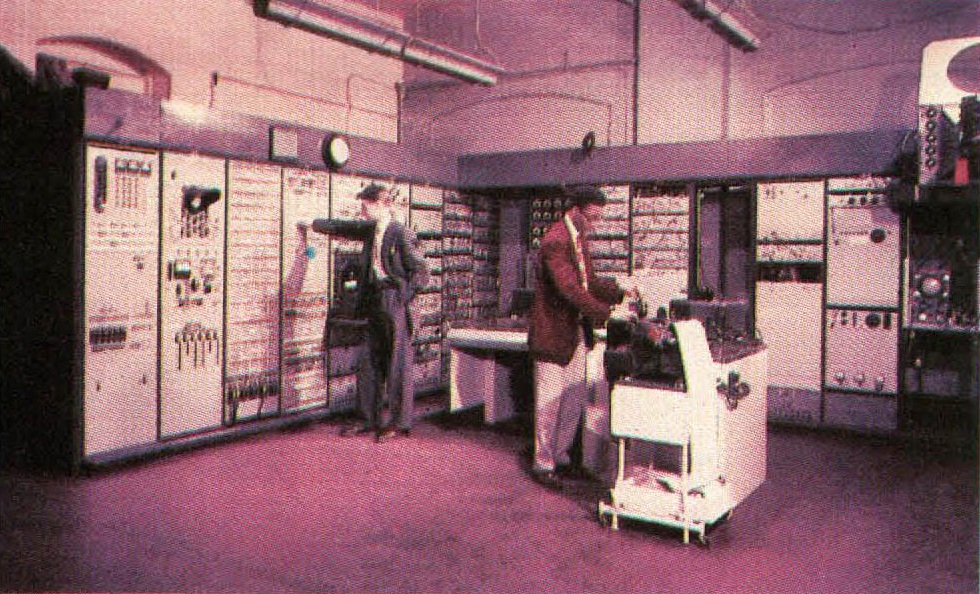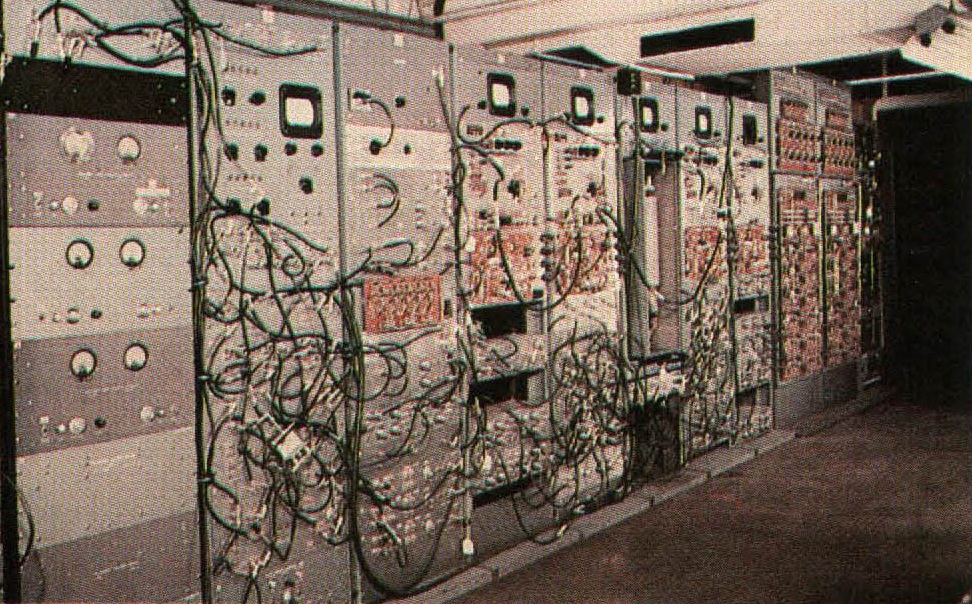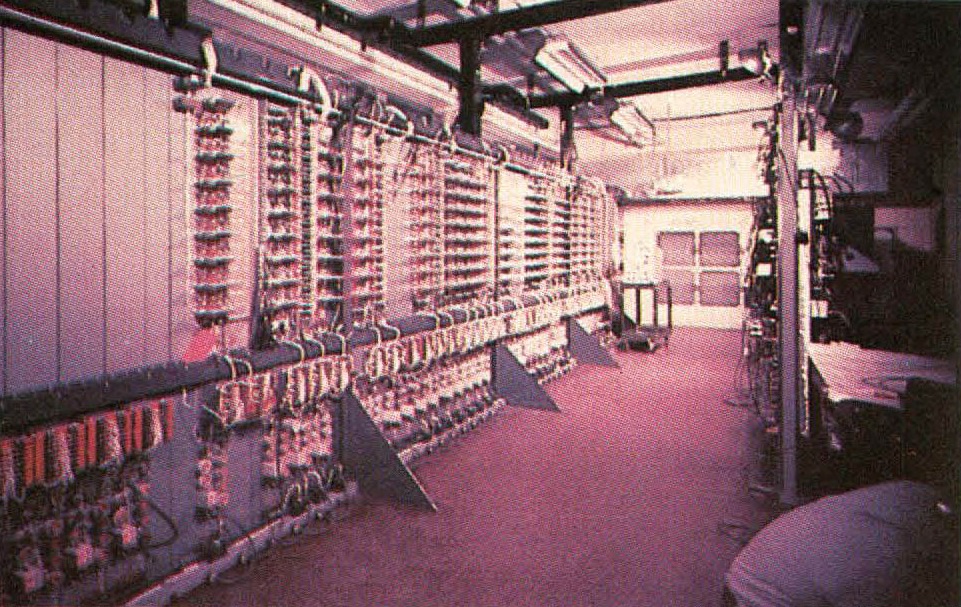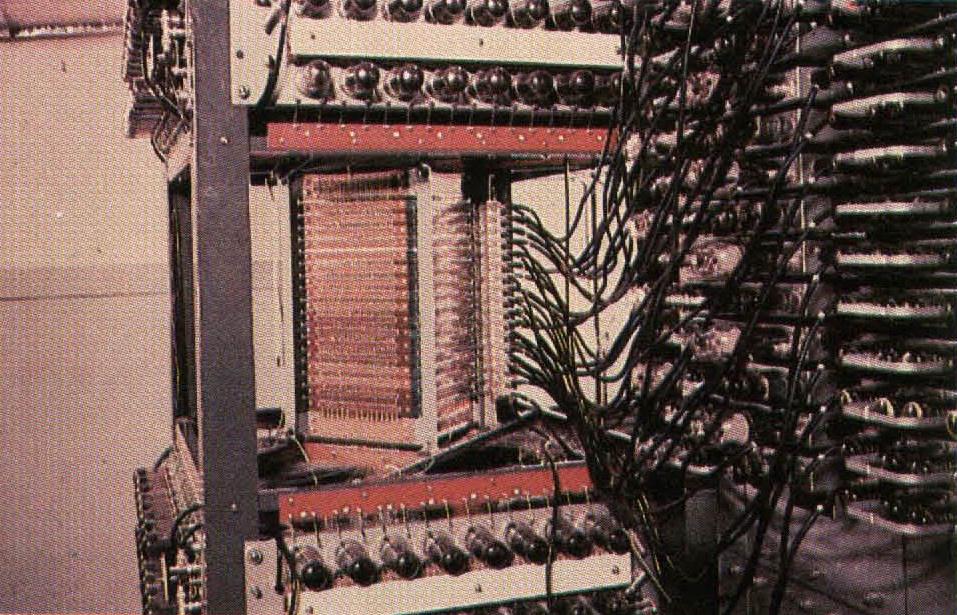By 1948, the project’s goal, the construction of a trainer-analyzer, was jettisoned in favor of the creation of a real-time computer. Meanwhile, the Special Devices Center had closed down and the Office of Naval Research (ONR) was picking up the tab for the computer, now called Whirlwind. And it was quite a tab. Whirlwind was the largest computer project of the late 1940s and early 1950s. It had an annual budget of approximately $1 million and a staff of about 175 people, including 70 engineers and technicians.
Forrester and Everett kept tight control of the effort, and their partnership was as effective, and almost as important in the history of computers, as Eckert and Mauchly’s. One engineer gave a vivid description of the pair:
Bob Everett was relaxed, friendly, understanding – and I have never seen anyone who could go to the heart of a problem so fast! Jay was as fast, maybe faster, but he was always more formal, more remote somehow, and you weren’t always sure how dumb he thought you were, or how smart. That kept us on our toes, I suppose. It was difficult to know what he was going to do next, but he was so terribly capable, it didn’t matter if you couldn’t follow his reasoning. He was always thinking with seven-league boots on. It made him a pretty formidable guy to work for – partly because he and Bob always made sure you understood the problem you were working on, by finding out what you didn’t know as well as what you did know…I never resented Jay’s obvious ability, but he wasn’t the sort I’d call easy to work for. He definitely never was “one of the boys. ” He was the chief, cool, distant, and personally remote in a way that kept him in control without ever diminishing our loyalty and pride in the project.
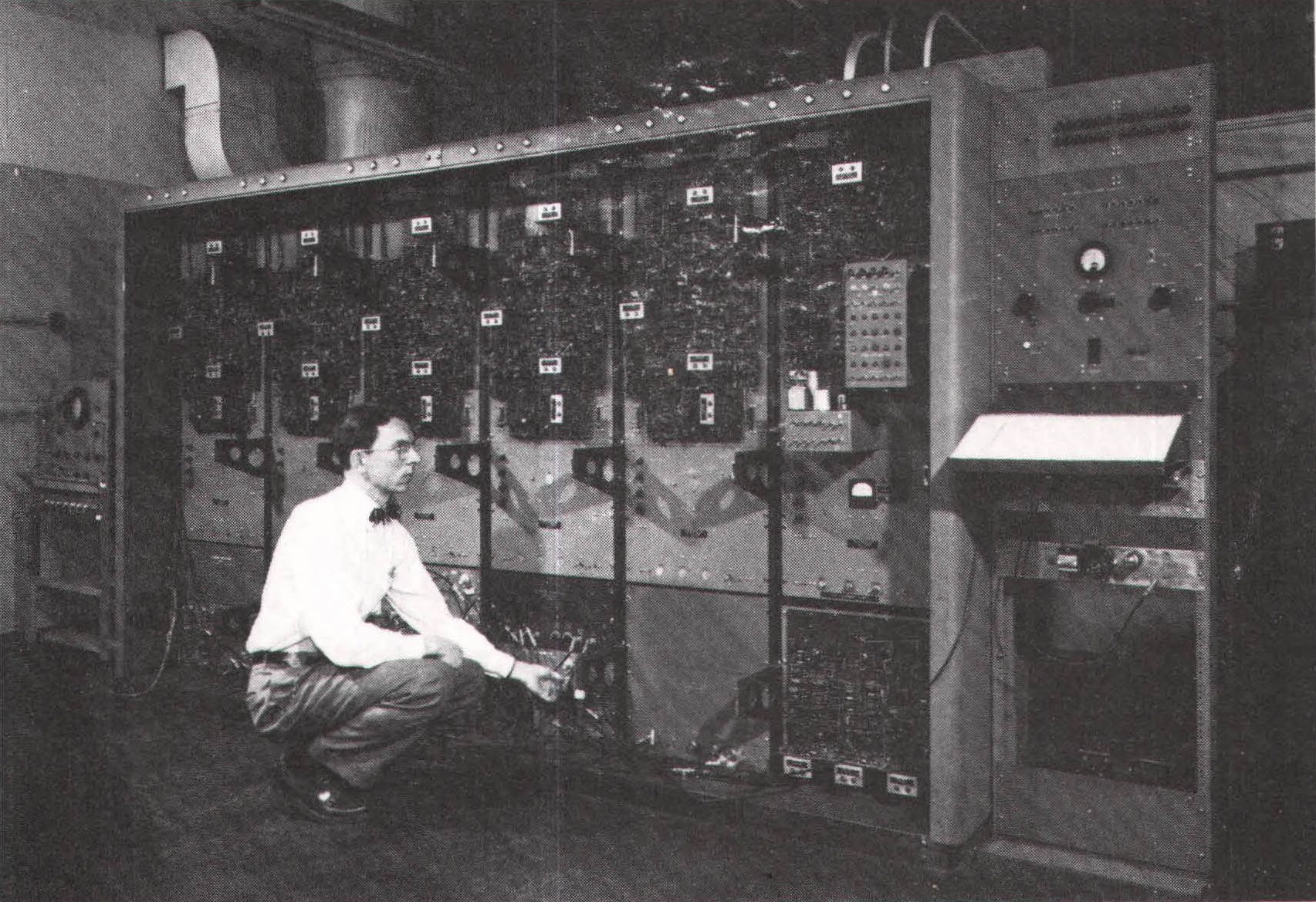
An enormous machine consisting of a control room and eight tall banks of tubes jutting off on either side of a central corridor, Whirlwind took three years to build. Altogether, it occupied 2,500 square feet of floor space – two and a half times the size of ENIAC. Although Whirlwind contained far fewer tubes than ENIAC – 4,000 to its predecessor’s 18,000 – it was spread out to make construction and maintenance easier. Since Whirlwind was designed for real-time applications, it was the fastest computer of the early 1950s, able to add two sixteen-bit words in two microseconds or multiply them in twenty microseconds. (Note the small size of Whirlwind’s words, which were well suited for a real-time computer that had to run at high speed. Most computers at the time, being designed for scientific calculations, used words with at least forty bits. Whirlwind was the first sixteen-bit computer.) As for Whirlwind’s internal read/write memory, it consisted of thirty-two CRTs, or electrostatic tubes, storing a total of 2,048 sixteen-bit words.
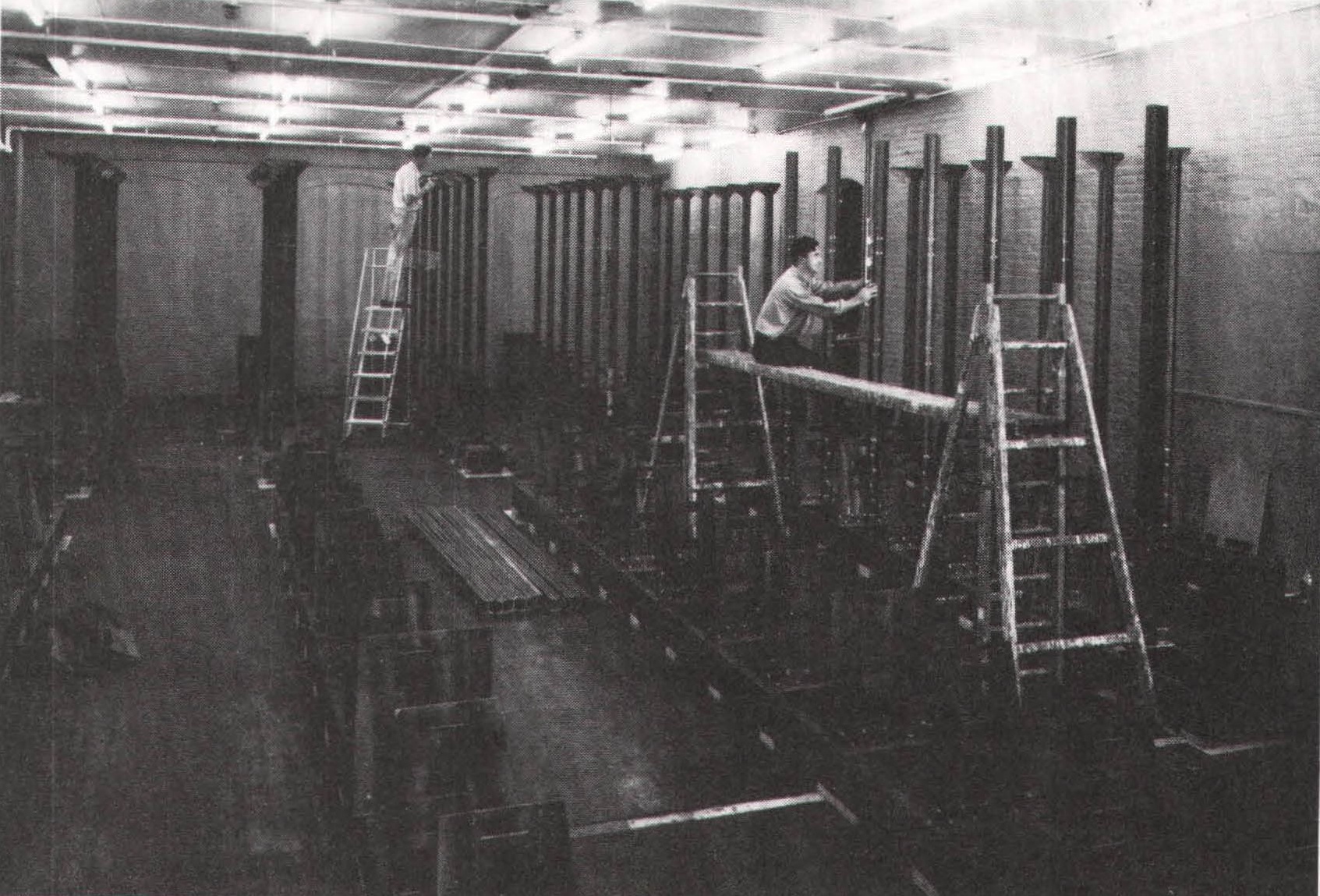
The electrostatic tubes were a constant source of headaches and Whirlwind’s most serious shortcoming. Although carefully produced by hand in Whirlwind’s workshops, they rarely lasted longer than a month. In brief, the faces of the tubes tended to fade, erasing their data and reducing their storage capacity. (Information was stored on the faces in the form of positively or negatively charged spots of electrons, shot from

“guns” at the bottom of the tubes.) Since the tubes cost about $1,000 apiece, the Whirlwind project was spending about $32,000 a month for internal storage. Moreover, the computer was unreliable, out of order several hours a day, and unable to run programs requiring a lot of read/write memory. Whirlwind desperately needed a better form of memory.

In the spring of 1949, Forrester conceived of a solution – a solution that solved not only Whirlwind’s problem but the touchy internal memory problems of all computers. “I was reading a technical journal one evening, just leafing through the advertisements in the magazine Electrical Engineering,” he recalled in 1975,
when I saw an advertisement for a material called Deltamax . . . . It had been developed for magnetic amplifiers. I think it was derived from a material developed in Germany in World War II . . . When I saw this [material], I asked, “Can we use it as a computer memory? Is there some way to fit it into a three-dimensional array for information storage?” The idea immediately began to dominate my thinking, and for the next two evenings I went out after dinner and walked the streets in the dark thinking about it.
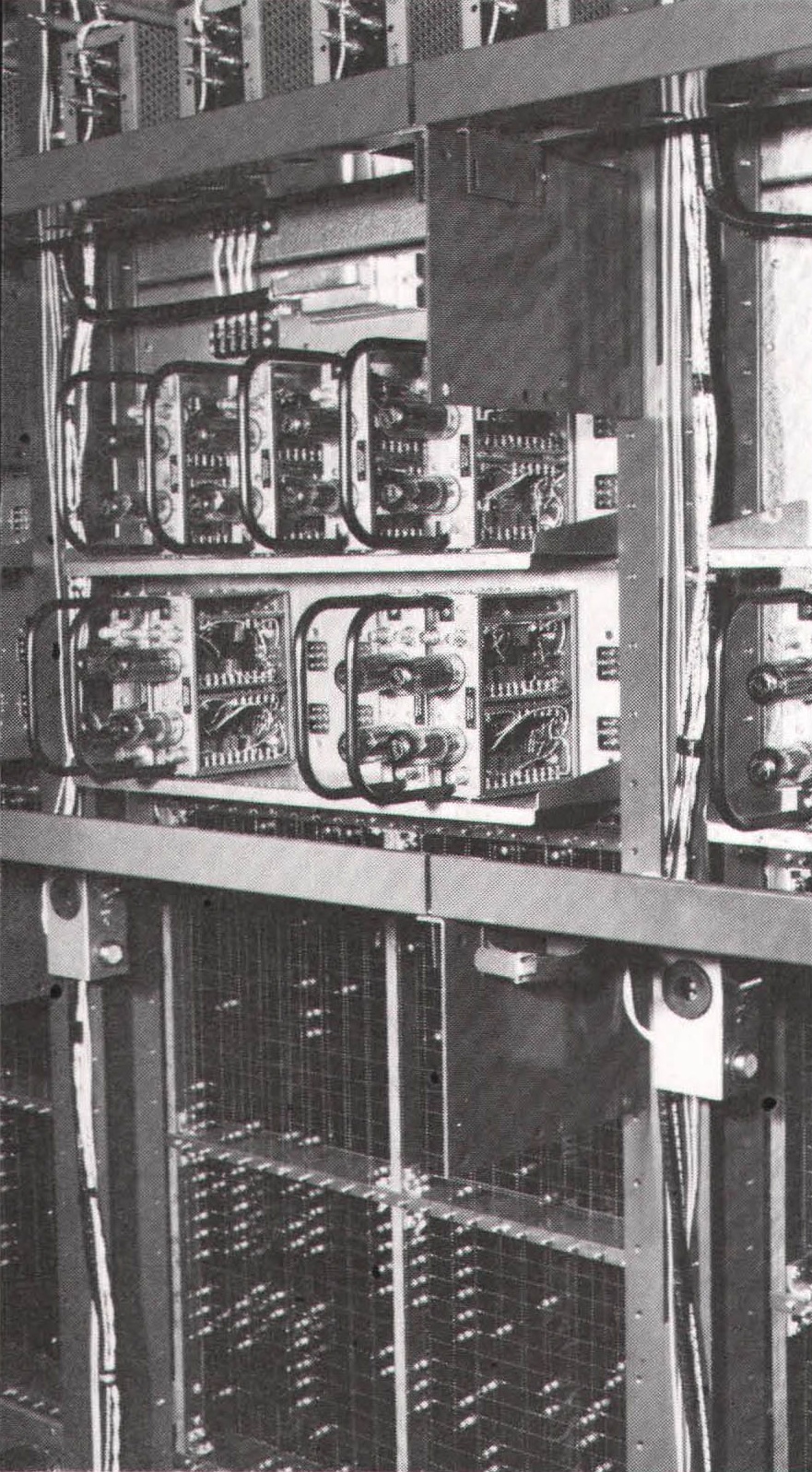
Forrester ordered some Deltamax, a metallic, magnetic material, and, without telling anyone what he had in mind, began experimenting with it. First, he flattened the stuff into thin ribbons and twisted them into small spiral rings. Next he ran a current through the rings, rapidly and repeatedly magnetizing them first in one direction (north), then in the opposite direction (south). A northerly polarity represented, say, a one; a southerly polarity, a zero. The scheme worked – the little Deltamax rings flipped from one binary state to another at the receipt of a charge and retained their states (whatever they happened to be) after the power was turned off. However, Deltamax was too slow and sensitive to physical pressures, such as touch, to serve as a practical storage element.
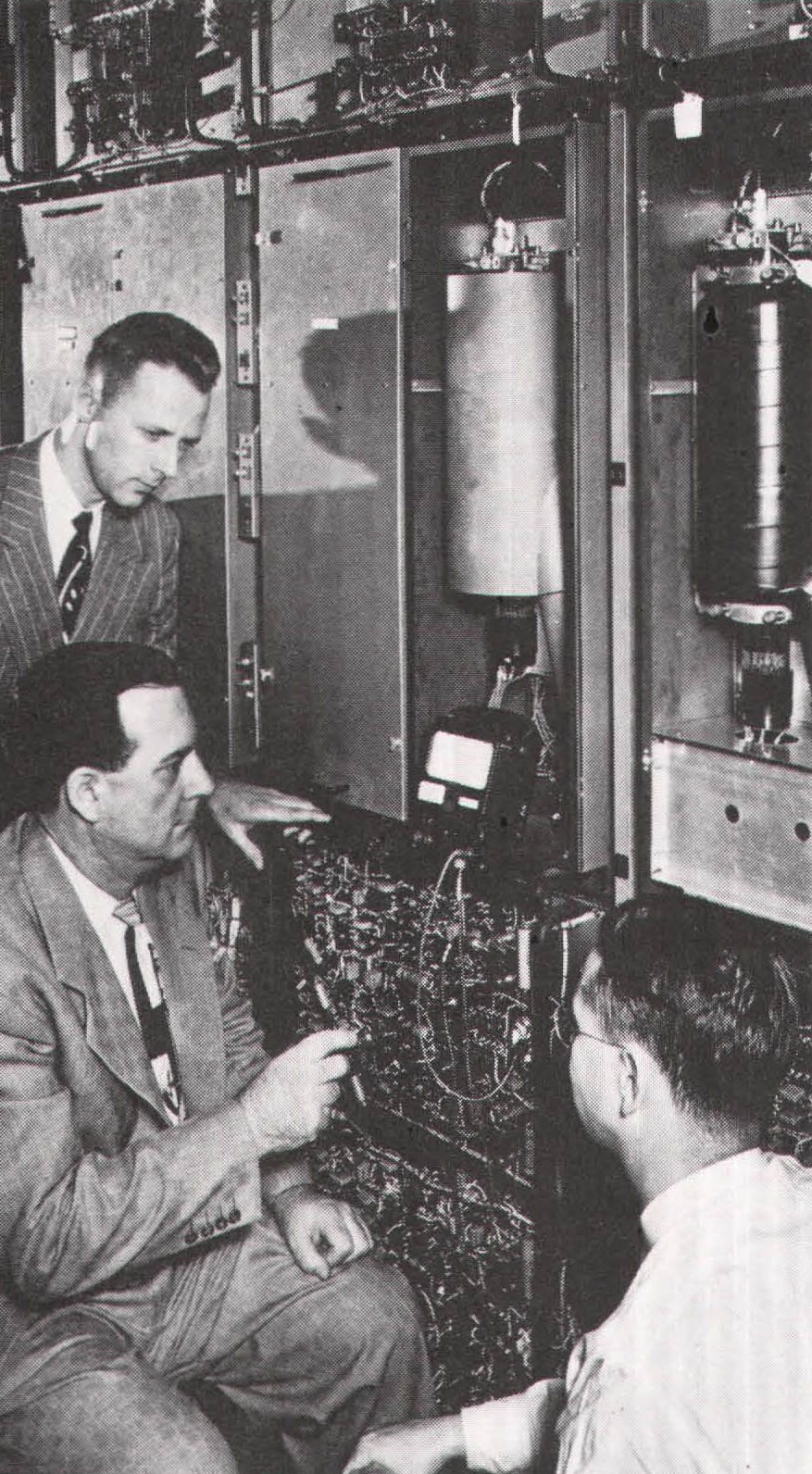
Confident that his notion had merit, Forrester enlisted the help of other engineers. His idea was to string up doughnutlike rings, or cores, of magnetic material on a grid of wires. Thus, just as every point on a map possesses its own coordinates, so would every core on the grid. For example, a core on the third row and fourth column of the first grid would have a coordinate, or address, of, say, 3,4,1; likewise, a core on the third row, fourth column of the second grid would bear the address 3,4,2. By energizing the proper pair of row and column wires on a given grid, a computer could read or write a bit into a magnetic-core memory. If a computer used sixteen-bit words, then every bit in the word would be located at the same address on every grid.
Forrester’s scheme was simple in principle, but it took a great deal of work to put into effect. A better material than Deltamax had to be found, and Forrester eventually settled on ceramic ferrite, which was much faster and hardier. And then, because Whirlwind was tied up with other important computational chores, a special computer, a smaller version of Whirlwind, had to be built to test the new memory. (The machine was constructed under the direction of Kenneth Olsen, a graduate student who, several years later, established the Digital Equipment Corporation, one of the largest computer manufacturers in the world.) The test computer worked perfectly, and a core memory was installed in Whirlwind in the summer of 1953 – four years after Forrester had dreamed up the idea. The effect on Whirlwind’s performance was impressive: operating speed doubled, input data rate quadrupled, and maintenance time on the memory banks fell from four hours a day to two hours a week.
